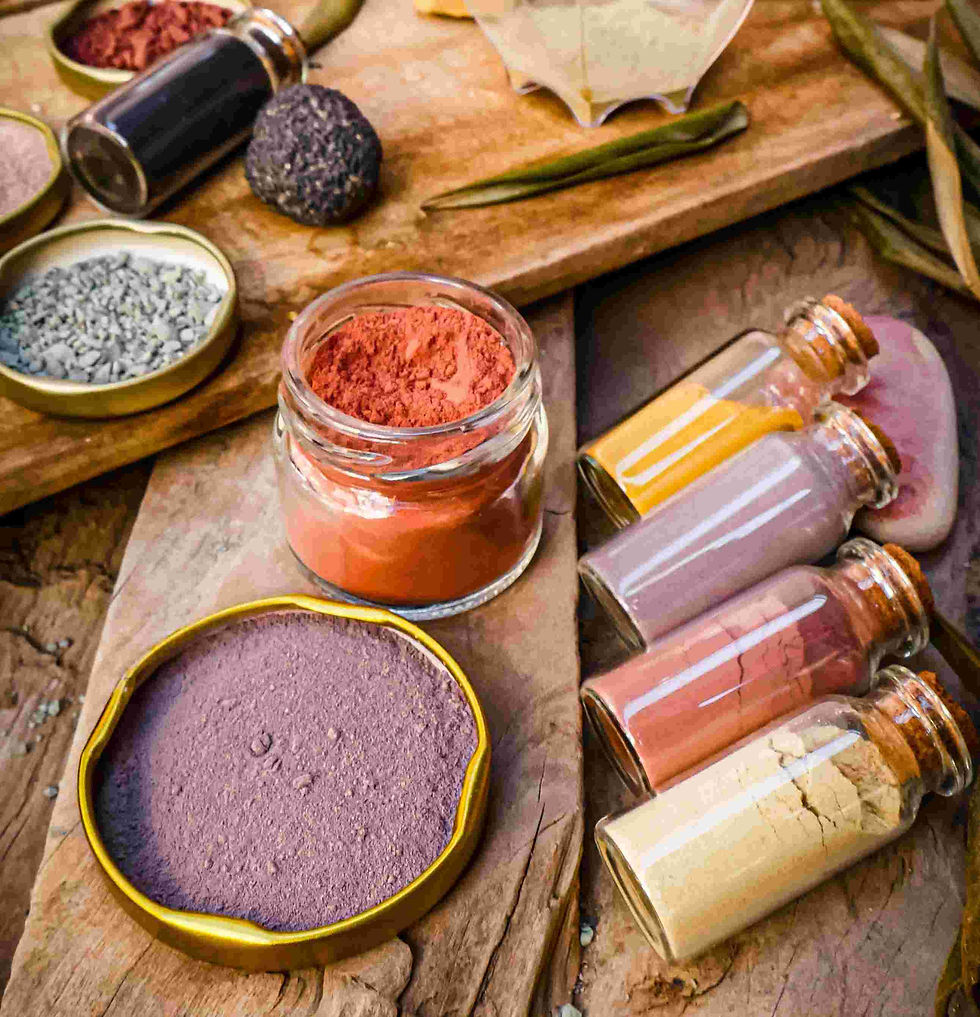The history of pigment and colour is a long and fascinating one, with evidence of the use of pigments dating back to prehistoric times. From the earliest cave paintings to the brilliant hues of modern-day paints and dyes, colour has played a significant role in human culture and society. In this blog post, we'll delve into the history of pigment and colour, exploring how it has evolved over time and how it has been used in various cultures and societies.
The first pigments used by humans were naturally occurring substances, such as clay, charcoal, and hematite (a type of iron oxide). These pigments were used to create the earliest known cave paintings, which date back to around 40,000 years ago. These paintings were often used to depict animals and other aspects of the natural world, and they were created using simple tools, such as sticks and bones, to apply the pigments to the cave walls.

As civilizations developed and became more sophisticated, the use of pigments and colour also evolved. In ancient Egypt, for example, a wide variety of pigments were used to create the vibrant colours seen in tombs, temples, and other structures.
These pigments were made from materials such as malachite (a type of copper ore), lapis lazuli (a blue gemstone), and ochre (a yellow-brown clay).
In ancient Rome, pigments were used to create a wide range of colours for use in paintings, frescoes, and other works of art. These pigments were often made from minerals and other naturally occurring substances, and they were used to create a wide range of hues, including red, yellow, green, and blue.
During the Middle Ages, the use of pigments and colour became more widespread, with artists and craftsmen using a variety of materials to create a range of hues. Pigments were made from substances such as plant materials, minerals, and insects, and they were used to create a wide range of colours for use in paintings, stained glass windows, and other works of art.
In the early modern period, the development of new pigments and methods of producing colour revolutionized the way in which colour was used in art and other fields. The invention of the printing press, for example, made it possible to mass-produce books and other printed materials using a wide range of colours. The development of synthetic pigments also made it possible to create a wider range of colours, including bright and vibrant hues that were not possible with natural pigments.
Today, pigments continue to play a central role in many aspects of our lives. From the paints and dyes used in the fashion industry to the inks used in printing and the pigments used in cosmetics, colour is an integral part of our world.
While the history of colour is a long and fascinating one, it is also a story that is still being written.

One of the most significant developments in the history of pigment was the discovery of how to create a stable, synthetic blue pigment. Blue has long been one of the most difficult colours to produce, as many naturally occurring blue pigments are unstable and fade over time. This changed in the early 19th century with the discovery of cobalt blue, a synthetic pigment made from cobalt oxide. This pigment was more stable than other blue pigments and could be used to create a wide range of shades of blue.
Another important development in the history of pigment and colour was the creation of aniline dyes, which are synthetic dyes made from coal tar. These dyes, which were first produced in the mid-19th century, allowed for the creation of a wide range of vibrant and long-lasting colours. Aniline dyes were particularly important for the textile industry, as they made it possible to produce brightly coloured fabrics that were previously not possible.
In the 20th century, the use of pigments and colour continued to evolve with the development of new technologies. One significant development was the creation of pigment dispersions, which are mixtures of pigments suspended in a liquid medium. These dispersions made it possible to create a wide range of colours with a high level of consistency, making them ideal for use in the printing industry.
Another important development in the history of pigment and colour was the creation of fluorescent pigments, which are pigments that emit light when exposed to ultraviolet radiation. These pigments, which were first developed in the 1930s, have a wide range of applications, including use in safety clothing, signage, and advertising.
Today, the use of color continues to evolve, with new pigments and colour-producing technologies being developed all the time. From the creation of new types of pigments to the development of digital colour printing technologies, the future of colour is certainly one to look forward to.
One of the most recent developments in the field of pigment and colour is the use of nanotechnology to create new types of pigments. By using nanoparticles, scientists have been able to create pigments with unique properties, such as the ability to change colour based on the angle of viewing or the intensity of light. These pigments have a wide range of potential applications, including use in security inks, packaging, and cosmetics.
Another exciting development in the field of pigment and colour is the use of biotechnology to create new pigments. By using microorganisms to produce pigments, scientists have been able to create a wide range of colours that were previously not possible. These pigments are environmentally friendly, as they are made from renewable resources and do not require the use of harmful chemicals.
In addition to the development of new pigments, there has also been a focus on sustainability in the field of colour. With concerns about the environmental impact of traditional pigments and dyes, there has been an effort to create more sustainable alternatives. This has led to the development of natural pigments made from plant materials, as well as the use of recycled materials to create pigments and dyes.
Overall, the history of colour is a long and fascinating one, filled with many important developments and innovations. From the earliest cave paintings to the latest advances in nanotechnology and biotechnology, colour has played a central role in human culture and society. As new technologies and techniques continue to be developed, the future of pigment and colour looks bright and filled with endless possibilities.
Comments